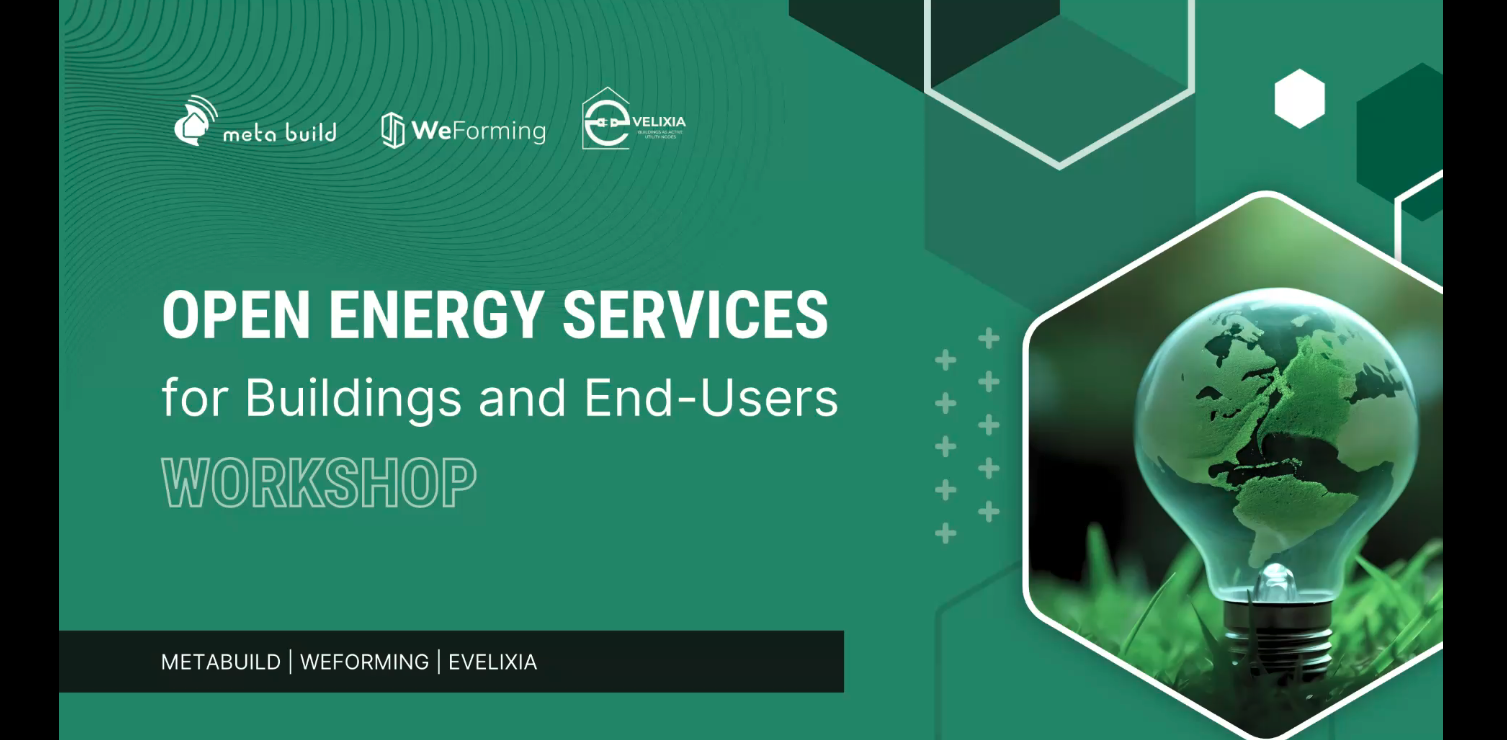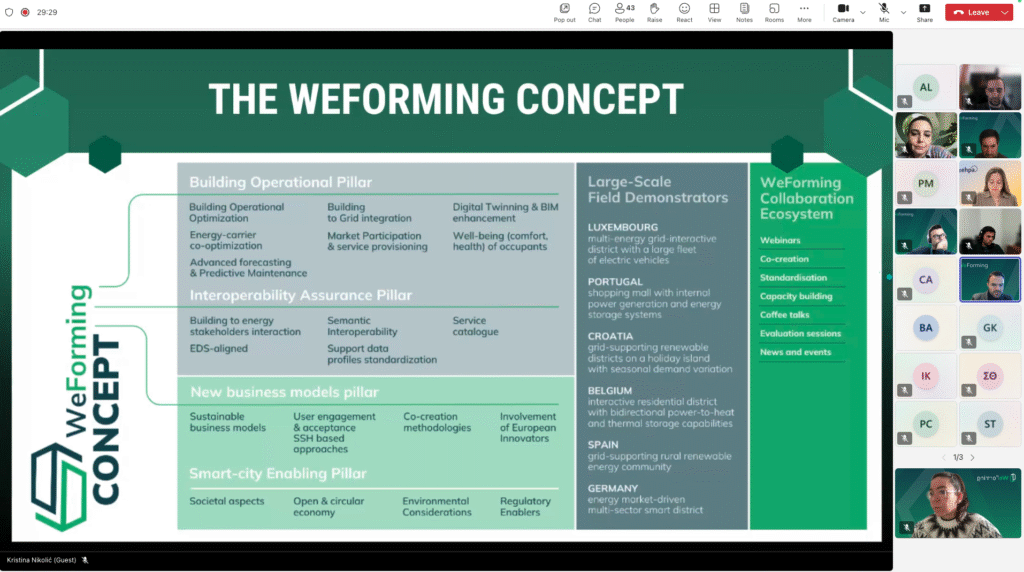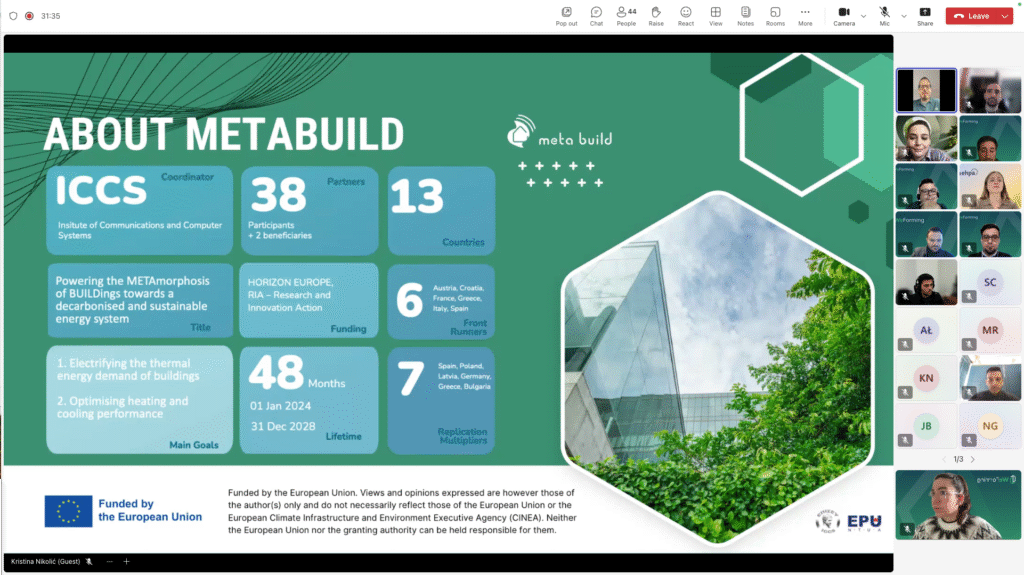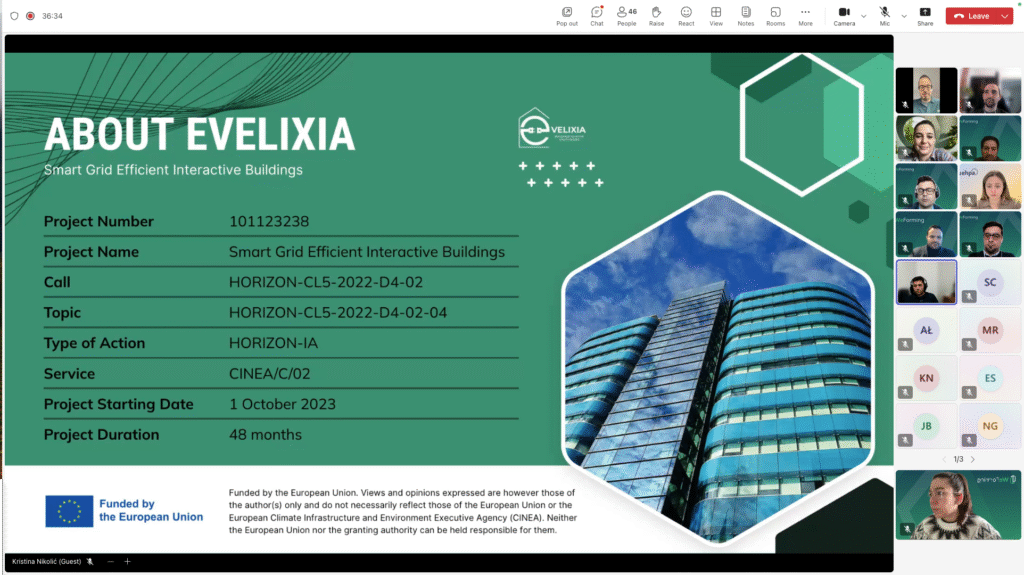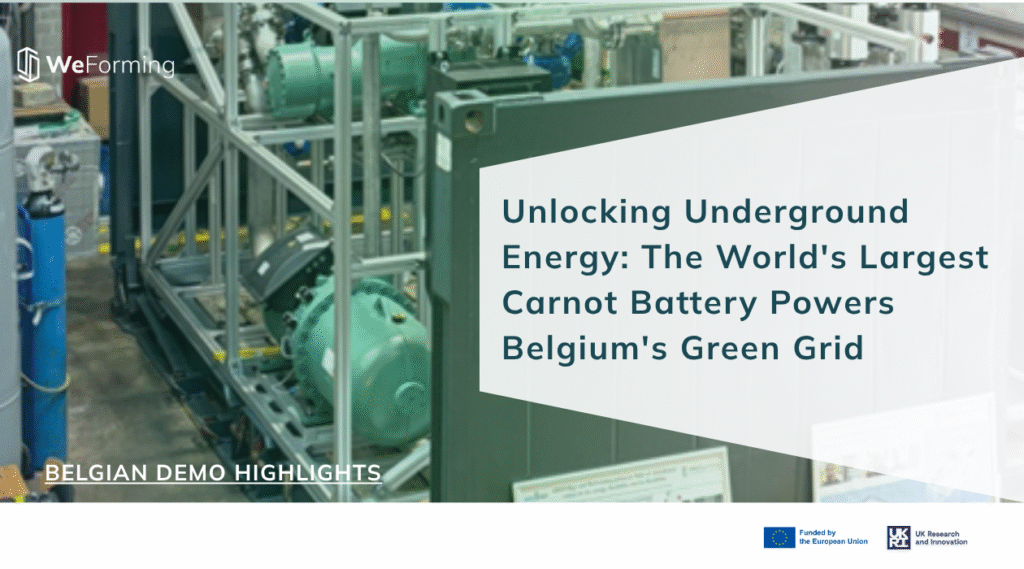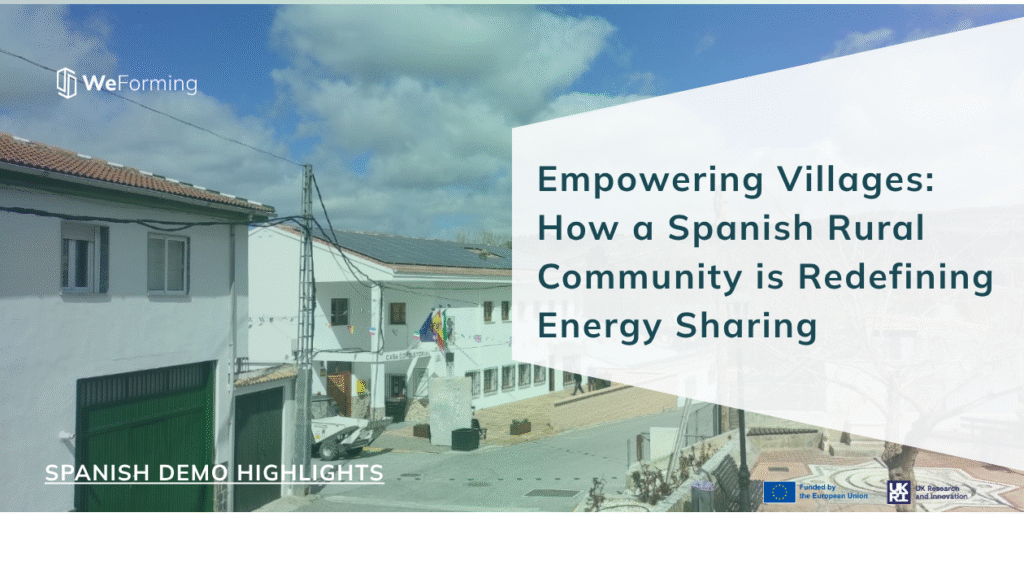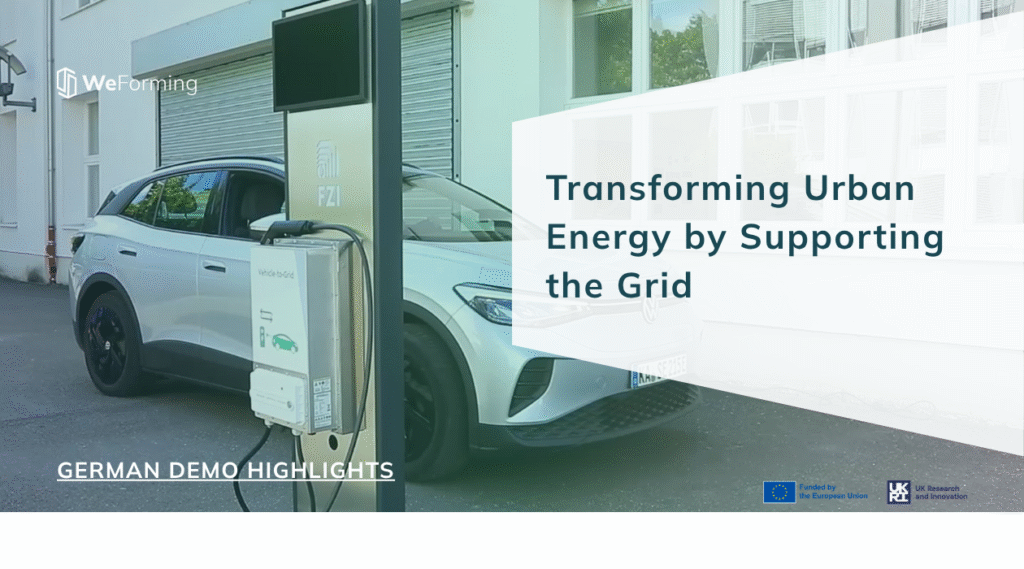The internal workshop held as part of the META BUILD, WeForming and EVELIXIA, projects brought together 50 participants (including project partners, external observers, policymakers and stakeholders) to discuss the future of open energy services, share challenges, and align on the best practices for the 3 projects. The session explored innovative solutions for sustainable energy management and the role of digital platforms in accelerating decarbonisation.
The event was introduced by Ângelo Casaleiro, from R&D Nester, who welcomed attendees and set the stage for an engaging exchange of ideas. “It’s not just about reducing emissions — it’s about optimising energy use, ensuring that what we produce is used efficiently and effectively.”
PROJECT PRESENTATIONS
WeForming: Intelligent Grid-Forming Buildings
Konstantinos Kotsalos, from European Dynamics, introduced WeForming, a project involving 30 partners from 10 countries. The project’s core concept, “intelligent grid-forming buildings (iGFB),” seeks to integrate various technologies to enable buildings to interact with system operators, other buildings, energy communities, and stakeholders. Key components include real-time controllers, power processing hubs, hybrid storage technologies, digital twin services, and AI/machine learning tools.
The project is structured around several pillars:
- Building Operational Pillar: Focuses on software and hardware integration.
- Interoperability Assurance Pillar: Emphasises common semantics and open services.
- Data Spaces: Aims to connect buildings within a broader energy context.
- Business Pillar: Explores new business models to facilitate building integration into the grid.
- WeForming Sustainable Hub Ecosystem: Promotes collaboration with other projects through workshops and online platforms.
Konstantinos stressed the importance of open services, emphasising interoperability, semantic standards, and common protocols.
EVELIXIA: Transforming Buildings into Active Utility Nodes
Stavros Koltsios introduced the EVELIXIA project, which aims to transform buildings into active utility nodes. The project addresses the issue of buildings being perceived as isolated and passive infrastructures. EVELIXIAplatform integrates various stakeholders, including building owners, system operators, and energy market participants.
The solution offers five pathways:
- Building-to-Grid Services: Helps end-users offer services to the grid.
- Grid-to-Building Services: Enables system operators to optimise grid assets.
- Human-to-Building Interfaces: Provides a web platform for accessing services.
- Systems Interoperability: Integrates data from the field and ensures security.
- Innovative Hardware Solutions: Utilises technologies like geothermal heat pumps and hydrogen storage.
Stavros detailed the various services offered by the EVELIXIA platform, including day-ahead optimisation, investment planning, and maintenance tools for both building and grid levels.
OPEN ENERGY SERVICES
WeForming
David Pera, from LIST (Luxembourg Institute of Science and Technology), elaborated on the concept of “intelligent grid-forming buildings,” emphasising their transformation from passive structures to active, interconnected components within multi-energy networks. These buildings leverage a range of technologies to provide not only thermal comfort and building-level services, but also to facilitate broader grid services such as emergency support and grid security.
“These buildings are no longer isolated entities,” David explained. “They engage in a symbiotic interaction with neighbouring buildings and energy networks, unlocking a spectrum of services beyond mere energy provision.”
Inspired by pilot projects in Luxembourg, Portugal, and Spain, WeForming aims to demonstrate the diverse applications of this concept. Each pilot showcases unique scenarios and target users:
- Luxembourg: A multi-energy grid interactive district, integrating electricity and geothermal-based district heating, along with a large EV charging infrastructure. Services focus on energy efficiency, multi-energy system optimisation, and grid flexibility.
- Portugal: A large commercial mall with significant thermal and electrical energy storage capacity, targeting flexibility services for the Transmission System Operator (TSO) and enhanced energy management through HVAC system optimisation.
- Spain: A rural energy community relying on solar energy and storage technologies, focusing on optimising energy consumption among community members and providing aggregated flexibility services to grid operators.
As David highlighted, “The end-users of these intelligent grid-forming buildings are diverse, ranging from TSO/DSO EV fleet operators to individual households, necessitating open, transversal, and accessible tools.”
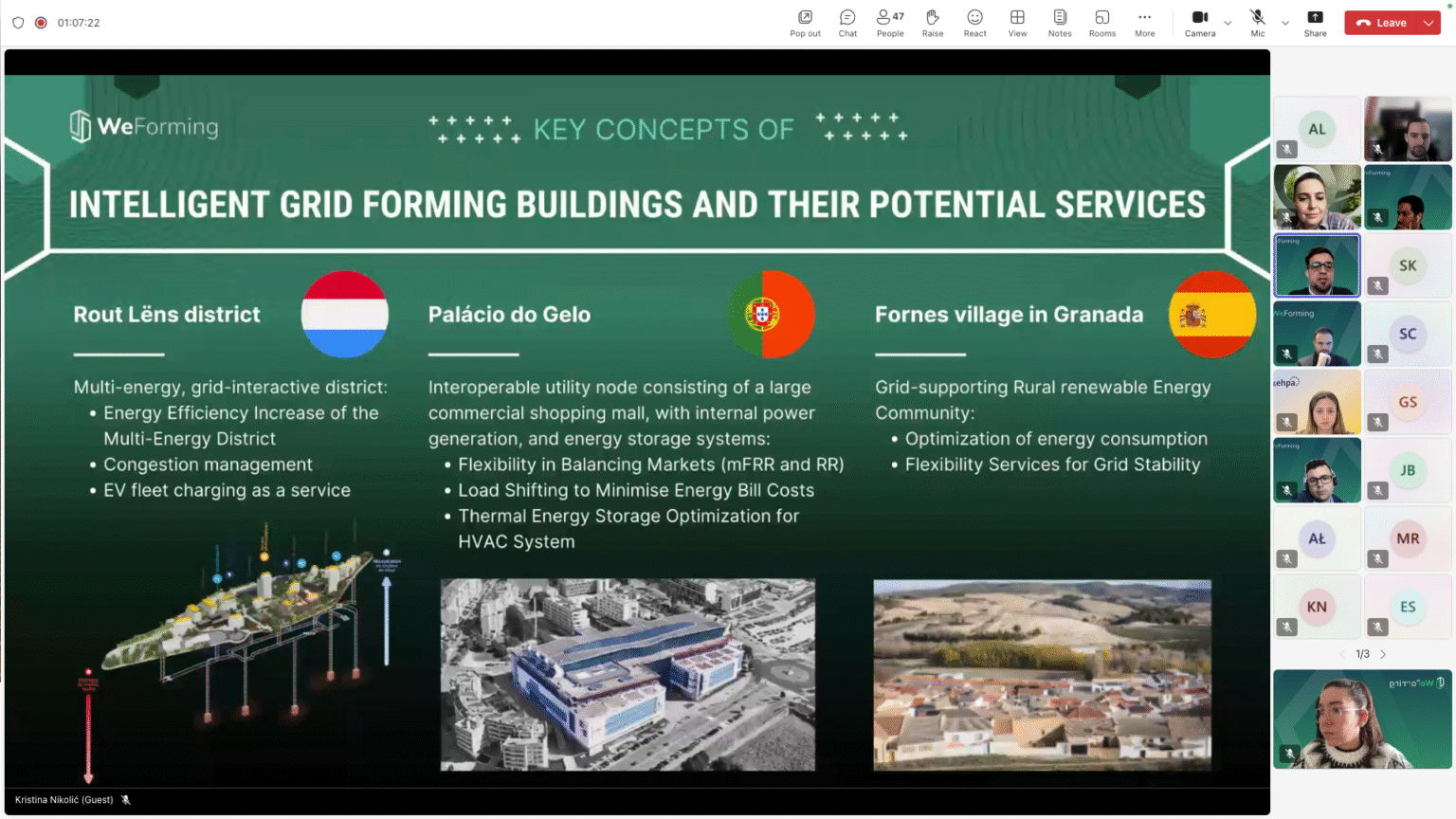
Gregory Baltas, from European Dynamics, further detailed the project’s efforts to integrate diverse digital tools and platforms used across the demonstration sites. Recognising the absence of a one-size-fits-all solution, WeForming is addressing the challenges of:
- Identity and Access Management Integration: Unifying various existing systems.
- Data Harmonisation and Interoperability: Standardising data models across different use cases.
- Security and Policy Compliance: Protecting sensitive data and ensuring regulatory adherence.
To address these challenges, the WeForming is developing a “bridge” or gateway to facilitate data exchange with the W-IBRA Data Space Connector, a common component across all project participants. This gateway aims to streamline data provision and consumption while minimising modifications to existing systems.
The project’s development activities are divided into two phases:
- Gateway Development: Creating an entry point for the data space connector, handling core functionalities like logging, authentication, security, and data transformation.
- Deployment and Testing: Deploying the data space connector in each demonstration site and conducting thorough testing to ensure seamless operation.
“We are confident that this approach will provide a solution that is easily adoptable by existing and new demonstration sites, establishing a framework for accommodating future services and participants,” Gregory concluded.
METABUILD
Symeon Chorozoglou, from ICCS, presented the METABUILD decarbonisation platform, a digital tool designed to recommend actions for reducing a building’s carbon footprint. The framework conducts baseline energy assessments and generates tailored decarbonisation plans based on user-provided data and physics-based calculations. It also offers financial and environmental impact analyses.
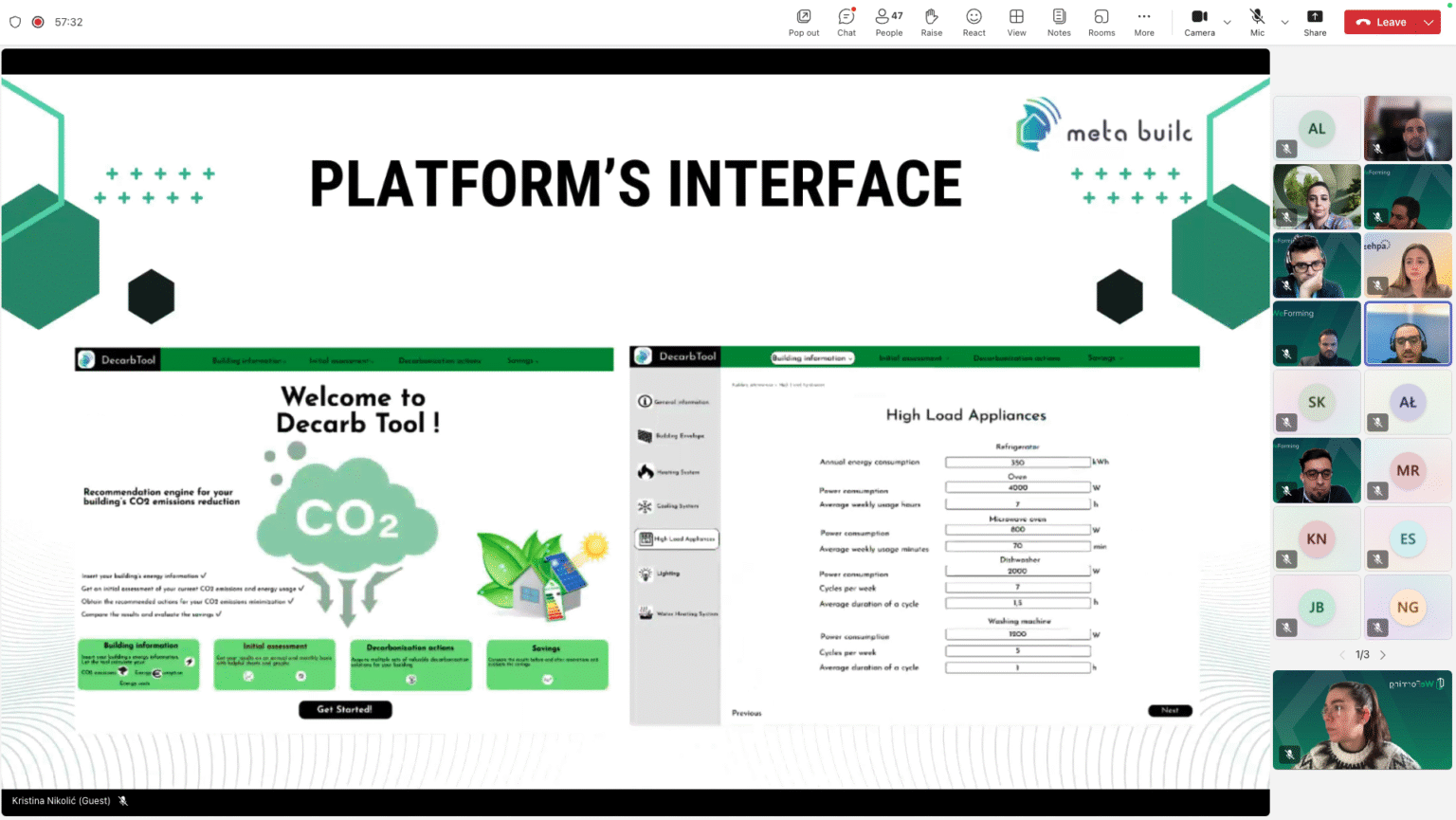
EVELIXIA
Stavros provided a detailed overview of the project’s service framework, which is structured around two levels: building level (building-to-grid) and grid level (grid-to-building). These services are designed to align with the project’s first two innovative pathways, empowering users to actively participate in energy management.
Building Level Services:
1. Day-Ahead Optimisation:
- This service enables building users to optimise their building’s operation, reducing energy bills while maintaining comfort.
- The EVELIXIA platform collects field data from sensors and performs forecasting, generating control signals and recommendations for asset utilisation.
- Target users include building tenants and facility managers.
2. Building Investment Planning Assistant:
- This toolbox comprises two tools: the SRI advisor (Smart Readiness Indicator) and the VARY tool.
- The SRI advisor diagnoses building conditions and recommends optimal upgrades based on user preferences and cost analysis.
- The VARY tool performs life cycle analysis and cost assessments, aiding engineers in selecting optimal upgrade solutions.
- Engineers can upload building models and upgrade scenarios to compare KPIs.
3. Building Equipment Maintenance Toolbox:
- This service monitors the health status of building equipment (battery systems, cooling systems, and hot water storage).
- The EVELIXIA platform analyses sensor data to detect malfunctions and generate alerts.
- This tool assists building operators and engineers in proactive maintenance.
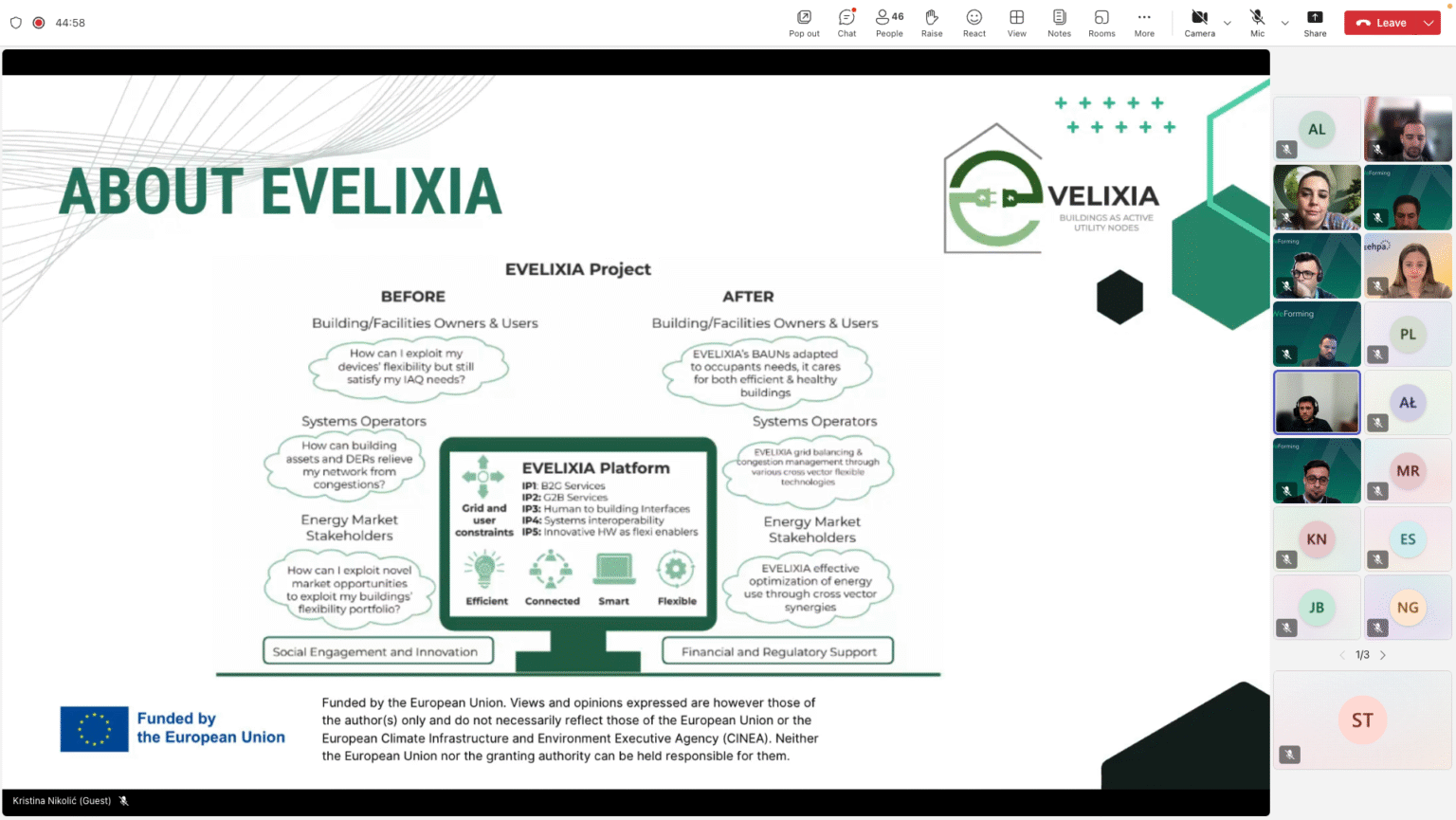
Grid Level Services:
1. Day-Ahead Optimisation:
- This service helps grid operators schedule the operation of grid-scale assets.
- The platform retrieves sensor data from grid assets and generates day-ahead dispatch schedules.
2. Peer-to-Peer Energy Flexibility Trading:
- This service facilitates energy trading between neighbouring buildings and grid assets.
- Aggregators can synchronise energy consumption and generation to reduce grid dependence.
- The platform matches energy generation with consumption, considering day-ahead dispatch schedules.
3. Portfolio Management:
- This service assists aggregators in managing their asset portfolios.
- The platform provides recommendations based on sensor data to optimise asset management and match energy consumption with grid dispatch schedules.
4. Grid Investment Planning:
- This toolbox enables grid operators to assess the impact of grid upgrade scenarios.
- Operators can upload grid models and sensor data to compare life cycle KPIs and select optimal upgrade options.
5. Grid Maintenance Planning:
- This service helps grid operators and aggregators schedule maintenance activities.
- The platform analyses sensor data to identify equipment needing maintenance and generates maintenance schedules and recommendations.
“These services are designed to empower end-users, whether building owners or grid operators, to make informed decisions and optimise their energy management,” Stavros emphasised.
By providing these tools, EVELIXIA aims to significantly enhance the interactivity between buildings and the energy grid.
Collaborative Insights and Future Directions
The workshop discussions highlighted the challenges and opportunities in developing open energy services. Participants identified technical, regulatory, and user engagement barriers (e.g., policies). They discussed the importance of data privacy, user training, and creating compelling value propositions for end-users.
The projects are exploring various strategies to overcome these challenges, including:
- Developing intuitive and user-friendly interfaces.
- Providing comprehensive training and tutorials.
- Establish clear metrics for return on investment.
- Collaborating on data standardisation and interoperability.
- Exploring innovative business models and incentives.
- METABUILD emphasised the potential to test software in other projects, providing data and services for initiatives like WeForming.
The workshop concluded with a commitment to continued collaboration and knowledge sharing, with a focus on driving the adoption of open energy services to create a more sustainable and efficient energy future. The participants agreed that simplifying the tools and bringing value to the end user in a clear way, would be a major key to user adoption.
The event marked a key milestone in building synergies across Horizon Europe projects and reinforced the shared ambition to empower buildings and end-users in Europe’s clean energy transition.
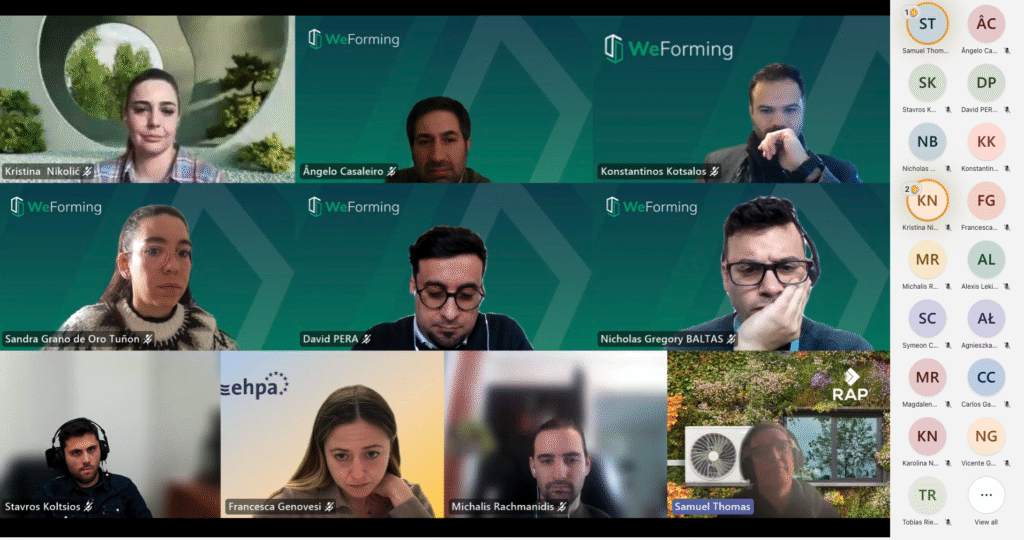
WeForming aims to transform buildings into dynamic contributors within the energy ecosystem, putting them at the forefront of Europe’s decarbonisation journey. Learn more about WeForming’s vision.

